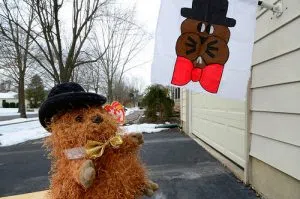While many may think of Valentine’s Day as February’s main holiday, Groundhog Day has had a long history within North America.
Earliest mentions of Groundhog Day can be traced back to the early 1900’s. Groundhog Day was exclusively American however. History professor at Western Alan MacEachern says that in Canada, we used a different animal for our holiday,
“The animal of choice for Canadians was the bear. That was the shadow we looked for on February 2, if we were looking for a shadow at all. We didn’t call it Bear Day or anything like that, but we didn’t call it Groundhog Day.”
MacEachern says there really is no specific reason why Canadians chose the bear,
“This was a tradition in Europe, and they would use different animals depending on what part of Europe you were talking about. When they brought it to Canada, people just on their own chose the bear and in the US they picked the groundhog.”
Europe’s history with celebrations on February 2 can be traced back to medieval times. Back then, it was known as Candlemas Day, a religious holiday where Christians celebrate the presentation of Jesus in the Jerusalem temple.
While some people today may not think this holiday is important or worth celebrating, MacEachern says its probably not going anywhere anytime soon because people want to hold on to this old tradition,
“I think they like it because its an old folk tradition, a weather tradition. In the past people had these all the time where they didn’t have to commemorate them, they didn’t need to think about them because they just always knew what nature lore meant.”
Groundhog Day marks the midway point between the winter and spring equinoxes.





